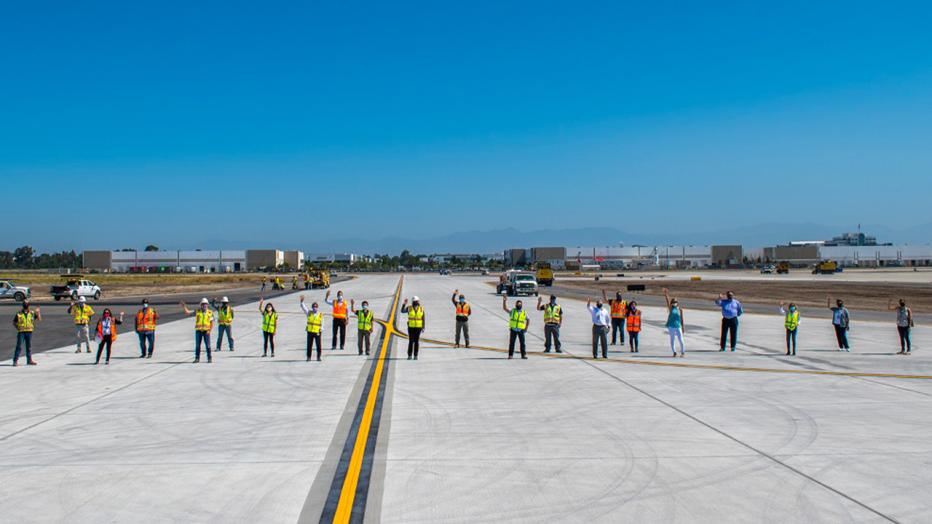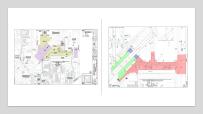
Creating an opportunity from the reduction of passengers at LGB due to COVID-19, Jacobs was instrumental in developing the plan for 57-hour closures of Runway 12-30 for two consecutive weekends along with rephasing construction to complete the project early with reduced impacts to operations and the community.
On July 6th, the rare, extended closure and rephasing paid off with the opening of Taxiway C and expediting project completion by approximately four months.
“Limiting the impact to airport operations was the primary goal in the closure scheme which lasted from 10:00pm on Friday night to 7:00am on Monday morning for two weekends,” says Jacobs Construction Manager Brook Corney. “Combining construction phases and rephasing allowed the airport to realize major efficiencies versus months of nightly closures.”
LGB Engineering staff originally planned for the extended closures to occur in September 2020, but in the wake of the pandemic, the timeline for the construction project was expedited because of reduced commercial operations and the resulting fewer noise impacts on the surrounding communities.
“By working as an integrated team between the LGB airport staff, airlines, FAA control tower, contractor, designer and construction manager, we were able to sequence the construction combining six construction phases into three to maximize efficiency and reduce the overall impacts,” explains LGB Capital Projects Coordinator II Vanessa Estrada. “Starting the extended closures early was a big advantage.”
To enhance airfield safety, this project converts the closed asphalt Runway 16L-34R pavement to a new concrete pavement now designated as Taxiway C. The former Taxiway C has become part of the existing ramp servicing the terminal gates. Necessary to modernize the airfield geometry and meet current FAA standards, the project also enhances capacity by eliminating the pushback of aircraft on to an active taxiway.

The original plan (left) was to have each of the six phases completed in succession over 361 calendar days (purple depicts night work and yellow depicts day work). The expedited plan (right, allowed by low passenger numbers due to COVID-19) meant that we were able to combine all the daytime work into one phase and complete the night work over two 57-hour weekend closures of the main runway which allowed us to save 120 calendar days on the overall schedule while reducing the impact to operation and air travel.
“Working with Jacobs to develop an opportunistic phasing plan allowed us to complete the Taxiway C project four months early and approximately $1 million under budget,” shares Long Beach Airport Director Cynthia Guidry. “And, most importantly, I’m happy to report that there were zero safety incidents and that COVID-19 protocols from the Centers for Disease Control and Prevention were closely followed.”
Jacobs provided prime construction management services for the improvements to Taxiway C, including Taxiway C1 and C2 Connectors and the Taxiway L, L4, and D4 and RAMP Connector. During the design phase, Jacobs provided review of both the phasing and design to aid with constructability and provide efficiencies in phasing. The project also included the construction of new cross taxiways; demolition of existing runway shoulder and taxiway pavements; drainage and grading improvements; hydro-seeding of graded infield areas; new LED airfield signage and lighting improvements, and taxiway marking and signage.












































